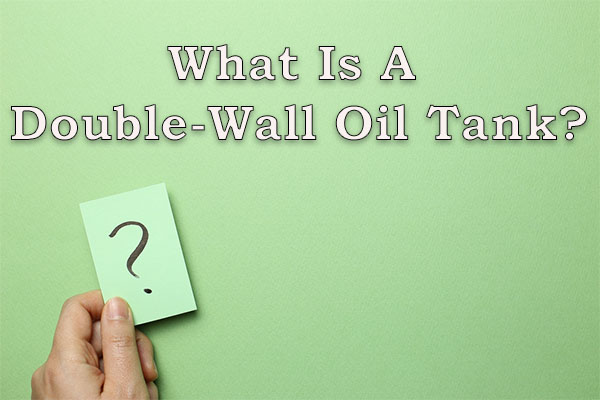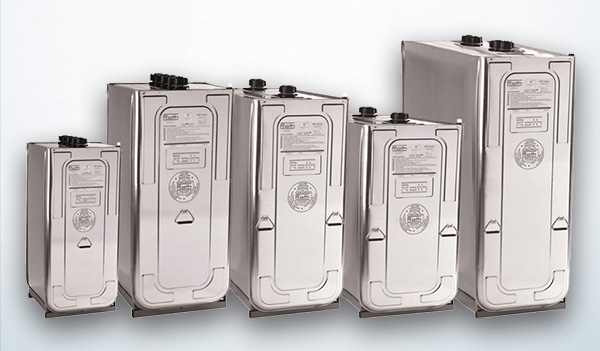
Many homes rely on heating oil as their primary fuel source. Conveniently stored in a tank on the premises, it’s channeled to furnaces or boilers to generate warmth. As homeowners think about updating their existing oil tanks, the double-wall heating oil tank emerges as a top choice. Dive into this article to uncover the intricacies of the double-wall oil tank, its advantages, and why PFO Heating & Air Conditioning recommends it for discerning homeowners.
Understanding the Double-Wall Heating Oil Tank
Contents

A double-wall heating oil tank isn’t just your typical fuel storage unit. Think of it as a tank within a tank. Specifically, it features an inner tank enveloped by a secondary outer tank. The gap between these two tanks is termed the “interstitial space.”
The brilliance of the interstitial space is its protective function. It acts as a safeguard, ensuring the environment remains untouched should the inner tank ever leak or spill. This space isn’t just a passive gap, either. It’s meticulously sealed and constantly monitored for potential leaks. Equipped with alarms and sensors, it ensures the homeowner is promptly informed of any irregularities.
Moreover, these double-wall tanks offer an extra protective feature: the “spill bucket.” Nestled within the interstitial space, this compact container is designed to capture and contain any unexpected leaks or spills.
Delving into the Mechanics of the Double-Wall Heating Oil Tank
At the heart of the double-wall heating oil tank lies its inner chamber dedicated to fuel storage. Encasing this is the outer tank, explicitly designed to function as an additional line of defense. Should any mishap occur within the inner tank, like a leak or spill, the interstitial space stands vigilant, ensuring the fuel is trapped between the two tanks. This protective mechanism prevents any potential environmental contamination or damage.
Advantages of Opting for a Double-Wall Heating Oil Tank

The distinction between double-wall heating oil tanks and their single-wall counterparts is undeniable. Here are the key benefits that set them apart:
- Enhanced Leak and Spill Security: The double-wall tank’s primary allure is its amplified protection. Its dual containment system mitigates risks associated with leaks and spills, something a single-wall tank cannot match.
- Durability and Longevity: A double-wall heating oil tank isn’t just about safety; it’s built to last. Many of these tanks’ outer shells are crafted from high-density polyethylene (HDPE). HDPE is renowned for its resilience. It’s UV-resistant and can combat the harshest weather elements. Such robust construction makes the double-wall oil tank optimal for outdoor setups.
Double-Wall Heating Oil Tank FAQs

Do Double-Wall Heating Oil Tanks Cost More Than Their Single-Wall Fuel Tanks?
Yes, double-wall heating oil tanks generally come with a heftier price tag when compared to single-wall tanks. Let’s explore the reasons behind this price disparity:
- Materials Cost: Double-wall tanks incorporate a blend of materials in their construction. While the inner tank is made from materials comparable to those in single-wall tanks, the outer tank leverages high-density polyethylene (HDPE). HDPE, being more durable and resistant than conventional steel or plastic, is naturally more expensive.
- Manufacturing Intricacies: Crafting a double-wall tank isn’t a straightforward endeavor. Each inner and outer tank must be constructed individually before they’re fused. This intricate process and the need to seal and test the interstitial space for potential leaks elevate the production costs.
- Installation Specifics: Setting up a double-wall tank requires meticulous attention to detail. From ensuring the tank is perfectly leveled to continuously monitoring the interstitial space for potential leaks, these additional steps can increase installation costs.
- Long-Term Value: While the initial outlay for a double-wall tank may be higher, viewing this as a long-term investment is essential. Their robustness and increased longevity mean homeowners might spend less in the long run as they sidestep frequent repairs or replacements.
While double-wall tanks might appear costlier initially, their long-term benefits and the peace of mind they offer make them a worthy investment.
Can I Set Up A Double-Wall Heating Oil Tank Inside My Home?
Absolutely, double-wall heating oil tanks are suitable for indoor installations. However, there are certain precautions and guidelines that homeowners should be mindful of:
- Ventilation is Key: The chosen installation area must be well-ventilated to thwart the concentration of potentially harmful fumes. This might involve using specialized pipes or vents to expel fumes outdoors.
- Adhering to Guidelines: Ensure the installation aligns with the manufacturer’s directives. Moreover, familiarize yourself with and adhere to local building norms and regulations.
- Safety First: An indoor setup often necessitates additional safety protocols. For instance, placing a spill containment tray under the tank might be prudent. This tray will act as a safety net, catching accidental leaks or spills.
- Seek Expert Advice: While it’s feasible to install the tank on your own, engaging with a seasoned professional, like the experts at PFO Heating & Air Conditioning, is advised. Their expertise can guide the installation process, ensuring optimal safety and compliance with all requisite regulations.
Remember, while indoor installation offers benefits, ensuring safety and compliance should always be paramount.
Do Legal Authorities Mandate Double-Wall Heating Oil Tanks?
The answer varies based on your geographical location. Not every state or locality mandates the use of double-wall heating oil tanks. However, many regions have adopted regulations emphasizing secondary containment for fuel storage tanks.
Here’s a breakdown:
- New Installations vs. Replacements: In certain jurisdictions, the mandate for a double-wall system applies primarily to brand-new tank installations. Conversely, other areas might stress this requirement only when replacing existing tanks.
- Retrofitting Existing Systems: Some regulations might not explicitly demand double-wall tanks but may necessitate that existing single-wall tanks undergo retrofitting. This could involve integrating a double-wall system or equipping the current tank with supplementary containment features, such as a containment tray.
- Stay Informed: To avoid potential pitfalls, it’s advisable to consult local governing bodies or knowledgeable professionals proactively. This ensures your tank aligns with local regulations, guaranteeing your fuel storage’s safety and adherence to legal requirements.
PFO Heating & Air Conditioning always emphasizes the importance of legal compliance and can provide expert guidance to help homeowners easily navigate these requirements.
In Summary
Double-wall heating oil tanks stand out as an exemplary choice for fuel storage, thanks to their reinforced protective features against potential leaks and spills. Their inherent strength and the added safety layer make them a commendable choice for homeowners considering an oil tank replacement. While the initial cost might be higher than single-wall tanks, the long-term advantages, from durability to peace of mind, underline their value as a prudent long-term investment. With PFO Heating & Air Conditioning by your side, you can make informed choices that prioritize safety and longevity.
Call PFO Heating & Air Conditioning For Reliable Heating Oil Deliveries

When you’re searching for a reputable heating oil delivery company, you can contact PFO Heating & Air Conditioning.
We offer the best home heating oil delivery and the most reasonable heating oil prices in the area. We have different delivery plans and financing options so you can customize your oil deliveries to meet your needs. Also, our team of expert technicians provides HVAC services to help improve the performance and efficiency of your HVAC equipment. Our priority is your satisfaction, so we back all of our work with a guarantee. Give us a call today!
Call PFO Heating & Air Conditioning today and learn more about the services we offer. We will be happy to answer all your questions and concerns. Call now!
Click here to contact us now or call us at (800) 253-9001 to find out more! Click the link to view our service area.



